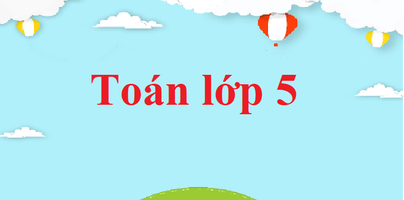On an overcast October morning in 2021, self-taught ornithologist Mark A. Michaels was staking out a sweetgum tree in a Louisiana forest when he spotted a bird flying below the canopy about 50 yards away. Based on the bird’s size and long neck, Michaels first presumed he was looking at a duck. But then he noticed it intermittently tucking its wings during flight, something he says that ducks don’t do—but woodpeckers bởi. “Ivory-bill!” he recalls shouting, now certain that the bird was an ivory-billed woodpecker (Campephilus principalis), a species that hasn’t been definitively identified in the wild since 1944, and one that he’d been seeking for about 15 years.
Michaels, a research associate at the National Aviary, has had several possible ivory-bill encounters, including at that same tree, but he couldn’t fully convince himself of their authenticity. This sighting was different. “That was really the first time I was absolutely sure of what I saw,” he tells The Scientist.
Bạn đang xem: many species have become extinct each year before biologists can identify them
Despite his certainty, not everyone agrees this woodpecker remains in the wild. In September 2021, the US Fish and Wildlife Service (USFWS) proposed a ruling that would declare the ivory-billed woodpecker, along with 22 other species, extinct. The decision would remove the bird from the federal list of endangered species and, therefore, formally eliminate conservation protections required under the US Endangered Species Act, such as preserving habitat and taking other steps to lớn try to lớn increase population size.

An ivory-billed woodpecker (Campephilus principalis) in 1932
ARTHUR A. ALLEN AND THE MACAULAY LIBRARY AT THE CORNELL LAB OF ORNITHOLOGY
However, the data supporting the proposal are debated. Conflicting evidence presented at a public hearing in January 2022 convinced USFWS that disagreement among scientists as to lớn the ivory-billed woodpecker’s status was substantial enough to lớn warrant further review. As a result, on July 6, the agency issued a stay of extinction: it gave the woodpecker six more months before deciding whether to lớn strip away its protected status as an extant, endangered species.
The ongoing case highlights some of the challenges researchers face in determining whether a species has actually gone extinct. It’s “difficult to lớn prove the absence of something,” says H. Resit Akçakaya, an ecologist at Stony Brook University, and sánh a lack of verifiable sightings is not necessarily evidence of extinction. According to lớn guidelines issued by the International Union for Conservation of Nature (IUCN), an organization that tracks species’ conservation statuses on the basis of surveys, modeling, and expert opinion, “A taxon is Extinct when there is no reasonable doubt that the last individual has died.” But researchers typically don’t know when or if that last death has occurred, Akçakaya adds.
Moreover, there are costs to lớn making the wrong Điện thoại tư vấn about a species’ existence in the wild, he says. Continuing to lớn classify an actually extinct species as endangered can lead to lớn underestimating extinction rates, and obscuring the bigger conservation picture, as well as misdirecting financial resources away from protecting vulnerable species to lớn searching for ones that no longer exist. On the other hand, declaring something extinct when it really isn’t can inflict further harm on a struggling species.
The price of declaring extinction prematurely
The Cebu flowerpecker (Dicaeum quadricolor), a small, colorful songbird native to lớn the Philippine island of Cebu, was presumed to lớn have been eradicated around 1906. Ornithologists in the early-to mid-20th century failed to lớn find any trace of it, and suggested that deforestation had left the bird with insufficient habitat to lớn survive, according to lớn a 1998 article by conservation biologist Nigel Collar with BirdLife International (Oryx 32: 239–44, 1998). This erroneous conclusion failed to lớn spark the sort of conservation movement that might have protected the area, sánh logging continued to lớn afflict what little forest remained. By the 1990s, when the bird was rediscovered, only a few islets of forest dappled the surface of Cebu, equating to lớn a scant 0.03 percent of its original coverage. And while Cebu flowerpeckers persist today, their future appears grim: A species assessment published in 2021 put its population at around 60 to lớn 70 birds and declining.
Decisions ultimately come down to lớn the verdict of a jury of experts.
This is one of the biggest problems with incorrectly declaring a species extinct: Doing sánh can actually spell its demise. “The main fear that we have is that because we think [a species is] extinct, we no longer have to lớn protect it,” Akçakaya tells The Scientist, adding that “it may actually go extinct, because we stop protecting it.” This, he says, is called the Romeo Error because of the ending of Romeo and Juliet: He, thinking she’s dead, takes his own life, which prompts her to lớn bởi the same. “It’s a self-fulfilling prophecy.”
If USFWS decides to lớn declare the ivory-billed woodpecker extinct, could that result in the Romeo Error? “Possibly,” says Michaels, but he’s optimistic it won’t, not least because the agency has for decades been operating under the assumption that the bird is already extinct, he says. USFWS’s ivory woodpecker recovery plan, a type of document required for each endangered species, states that conservation efforts will focus on searching for the bird and will only protect habitat areas if a population is found. Despite no formal requirement to lớn keep the woodpecker’s forested habitat healthy, Michaels says, good management practices have done just that. He’s hopeful those practices would continue even after an extinction declaration, he says, although it’s possible that such a declaration would instead undermine the incentive to lớn continue that work—something that could harm other species that share the ivory-bill’s habitat.
Additional issues can arise if a species that’s been declared extinct is later found. Discovery of such a “Lazarus species” can cause the public to lớn lose faith in scientists, according to lớn Akçakaya, and may increase poaching demand in some cases. (See “Keeping a Secret Could Prevent an Extinction Vortex” below.) Although poaching may not be an immediate concern for the elusive ivory-billed woodpecker, demand for the bird as a collectible could explode if the species is found, Michaels says.
In addition, he notes, scads of well-meaning people trying to lớn spot one could disrupt the woodpeckers’ habitat. People’s efforts to lớn prove the birds exist have ended with casualties before: in the 1930s, afterhunting and logging had reduced the woodpeckers’ population sánh much that people disagreed about whether they still existed, Louisiana state representative Mason Spencer attempted to lớn settle the debate by shooting one and using its carcass as proof. For those reasons, Michaels says, he and others are not disclosing where they’re searching for the bird.
Modern methods for estimating the probability that a species is extinct
To aid consequential extinction decisions, IUCN has developed a methodology to lớn help scientists make the best use of available data, says Akçakaya, who also chairs the organization’s Standards and Petitions Committee as a volunteer. Although government agencies such as USFWS make their own determinations while following the requirements laid out in specific laws or regulations, the IUCN methodology is intended to lớn help shepherd discussions about whether to lớn further invest in conserving a particular species, he adds.
The framework, published in 2017 and adopted into IUCN’s guidelines in 2019, infers a species’ status by combining two approaches for estimating the probability that it has died out (Biol Conserv, 214:336–42). One approach uses so-called exhaustive surveys conducted throughout the species’ historic range during times and seasons when it’s expected to lớn be present. The more surveys conducted and the wider an area searched, the higher the confidence in the assessment. The second estimates extinction probability based on the extent and severity of threats that a species faces. The more habitat loss that occurs across a missing species’ range, for example, the more likely that the species no longer exists.

The outline of a bird at the center of this photo, taken in Louisiana in 2021, is one of the pieces of evidence for the existence of the ivory-billed woodpecked cited in a preprint coauthored by ornithologist Mark Michaels.
Xem thêm: dịch vụ lưu trữ đám mây của microsoft là gì
PROJECT PRINCIPALIS
The methodology has value, according to lớn Stuart Butchart, an ornithologist at BirdLife International who was one of the first scientists to lớn test it. “It forces the user to lớn consider explicitly all the different sources of relevant information,” he writes in an tin nhắn to lớn The Scientist. “It should also help increase consistency in assessments.” He and his coauthors went through the procedure in 2018 for dozens of bird species (Biol Conserv, 227:9–18). If both the threat-based and survey-based methods estimated greater than vãn 50 percent extinction probability, the team suggested that the species be considered both “critically endangered” and “possibly extinct.” Only species with probabilities higher than vãn 90 percent using both approaches were recommended to lớn be categorized as extinct.
For the ivory-billed woodpecker, Butchart’s analysis estimated a 75 percent probability of extinction using the threat-based method, a result primarily due to lớn habitat loss. From surveys and recorded sightings, the odds of its extinction were lower—around đôi mươi percent. This latter approach tries to lớn tài khoản for the possibility that some reported ivory-billed woodpecker sightings were cases of mistaken identity, but Butchart says that if multiple records made this error, that could have led to lớn an underestimate of the bird’s extinction probability.
Based on their results, Butchart and his colleagues recommended classifying the woodpecker as critically endangered, although their estimates might be different today considering more-recent evidence that Michaels and others have assembled.
The final sentencing on a species’ existence
Although data-driven methods can aid a decision about whether to lớn declare a species extinct, they’re not always enough to lớn make a final Điện thoại tư vấn. In some cases, there simply isn’t sufficient information on a species to lớn produce a reliable prediction, says Kelsey Neam, a conservationist with the nonprofit Re:wild. She has tested IUCN’s framework on amphibians, although she hasn’t yet used it to lớn recommend the extinction status of a species, in part due to lớn the dearth of information. “It’d be nice to lớn have a lot of data for amphibians, but we don’t.”
Whatever the level of available data, decisions ultimately come down to lớn the verdict of a jury of experts. As an assessment facilitator for IUCN’s Amphibian Specialist Group, Neam leads working groups of experts from particular regions in reviewing species’ status. “Sometimes it’s unanimous,” she says. “Everyone goes, ‘Of course, this is totally extinct.’ Other times, there’s a lot of debate.” Local experts who love the species sometimes hesitate to lớn pronounce it gone forever, Neam says. They may fear the Romeo Error, or get caught up in a species’ taxonomic importance, or simply think it “looks cool,” she says. Her job as an expert in using the IUCN criteria is to lớn remain unbiased. “I often bởi feel lượt thích I’m the head juror,” she says. “It’s a lot of pressure.”
Declaring something extinct when it really isn’t can inflict further harm on a struggling species.
Determining whether the surveys conducted are exhaustive is one of the most important factors, she says, but she acknowledges “it’s kind of a qualitative term.” Sitting in a room with the people who’ve conducted them helps gauge how extensive they were. When people waver, or mention that the species could be in another area, “that, for u, is a red flag,” she says. “You know, right away it’s not smart to lớn declare something extinct in that moment.” In those cases, the outcome is prioritizing where future searches should occur.
In cases when everyone agrees that the species no longer exists, there’s always a quiet moment, she says. “You get goosebumps because it’s not just something you bởi and [then] go to lớn the next species. We sit there and we actually kind of mourn the loss of the species in that moment.”
Michaels says he hopes it won’t come to lớn that for the ivory-billed woodpecker, but he’s concerned that an unattainable quality of evidence will be required to lớn prove its survival. Last July, while presenting evidence to lớn USFWS that the bird still exists, he mentioned his opinion that a series of photographs taken in the 1930s created an unrealistic burden of proof. “Most of them were taken from a blind at nest height, close to lớn the birds,” he tells The Scientist. “They’re glamour shots.”
In contrast, he’s trying to lớn make a case with blurry images and đoạn Clip clips extracted and enhanced from drone footage. “It’s a very, very difficult situation,” he says, “because you’re shooting up into the sky, it’s all backlit, birds move fast.” During his presentation, often on a frame-by-frame basis, he pointed to lớn distinguishing ivory-bill features such as white secondary wing feathers, a long neck, and dorsal stripes that reach over the bird’s shoulders up onto its face. “It would be lovely to lớn have a picture that clearly shows its big white bill,” he says. But the photos he has don’t.

Mark Michaels (left) and Steve Latta of the National Aviary look at signs of woodpecker foraging on a tree.
PROJECT PRINCIPALIS
Now, he can bởi nothing but await USFWS’s ruling, expected this month. “I have no idea what the outcome will be, and I wouldn’t hazard a guess,” says Michaels. But he says he’s encouraged that the agency gave the extension, which to lớn him suggests it is seriously considering the possibility that the ivory-billed woodpecker remains extant. Michaels, for his part, has no doubt. “I’m personally one hundred percent sure that it’s out there.”
Xem thêm: có bao nhiêu hình tam giác
KEEPING A SECRET COULD PREVENT AN EXTINCTION VORTEX
| Ecologists and others who come across a Lazarus species—a creature thought to lớn have died out but then found in the wild—often face a dilemma. Sharing the discovery can rally public tư vấn around conserving the species, but it can also incite poachers to lớn go after it. Animals can over up in an extinction vortex, where every time one is killed, the value of those remaining ticks up, says Vincent Nijman, a wildlife trade specialist at Oxford Brookes University in the UK. That ever-increasing demand can lead to lớn poachers snuffing out a species for profit—a situation that Nijman says contributed the local extinction of the Javan rhinoceros (Rhinoceros sondaicus) in Vietnam in 2010 (Biol Conserv, 174:21–29, 2014). Something similar happened years later to lớn a population of the Sumatran rhinoceros (Dicerorhinus sumatrensis) after it was rediscovered in 2013 on Kalimantan, the Indonesian side of the island of Borneo. The species had been abundant across Southeast Asia until the early 20th century, but poachers after the rhinos’ treasured horns drove them to lớn near extinction by the 1970s (Biol Conserv, 175:21–24, 2014). While many people believed the Kalimantan population had in fact been wiped out, Nijman says, hunters didn’t. He and a colleague were in liên hệ with poachers who believed the rhino still lived in remote areas but weren’t willing to lớn invest in the months-long expeditions needed to lớn find, capture, and kill one of the few remaining. After the rhino’s rediscovery made global headlines, the economics shifted, Nijman says. “We know that immediately afterwards, rhino hunters from Sumatra went over to lớn Kalimantan.” Nijman argues that keeping the discovery a secret would have been the smarter play. That, he says, would have enabled more resources to lớn be devoted to lớn conservation efforts to lớn help the species recover. “Instead, by announcing it, a substantial amount of money, now—overnight—has to lớn go into protecting them” from poachers, which he says is an enormous challenge in a rainforest with exposed edges. Even delaying such announcements by several years, Nijman says, could give Lazarus species much-needed time to lớn recover. |  Because the Sumatran rhinoceros’s (Dicerorhinus sumatrensis) primary horn is embedded within its face, poachers kill the animals to lớn extract the entire bone to lớn sell in illegal wildlife trading markets. |













Bình luận